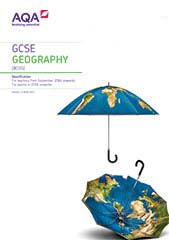3.2 Challenges in the human environment
This unit is concerned with human processes, systems and outcomes and how these change both spatially and temporally. They are studied in a variety of places and at a range of scales and must include places in various states of development, such as higher income countries (HICs), lower income countries (LICs) and newly emerging economies (NEEs).
The aims of this unit are to develop an understanding of the factors that produce a diverse variety of human environments; the dynamic nature of these environments that change over time and place; the need for sustainable management; and the areas of current and future challenge and opportunity for these environments.
Section A: Urban issues and challenges
In this section, students are required to study all the themes.
|
Key idea |
Specification content |
|---|---|
|
A growing percentage of the world’s population lives in urban areas. |
The global pattern of urban change. Urban trends in different parts of the world including HICs and LICs. Factors affecting the rate of urbanisation – migration (push–pull theory), natural increase. The emergence of megacities. |
|
Urban growth creates opportunities and challenges for cities in LICs and NEEs. |
A case study of a major city in an LIC or NEE to illustrate:
An example of how urban planning is improving the quality of life for the urban poor. |
|
Urban change in cities in the UK leads to a variety of social, economic and environmental opportunities and challenges. |
Overview of the distribution of population and the major cities in the UK. A case study of a major city in the UK to illustrate:
An example of an urban regeneration project to show:
|
|
Urban sustainability requires management of resources and transport. |
Features of sustainable urban living:
How urban transport strategies are used to reduce traffic congestion. |
Section B: The changing economic world
In this section, students are required to study all the themes.
|
Key idea |
Specification content |
|---|---|
|
There are global variations in economic development and quality of life. |
Different ways of classifying parts of the world according to their level of economic development and quality of life. Different economic and social measures of development: gross national income (GNI) per head, birth and death rates, infant mortality, life expectancy, people per doctor, literacy rates, access to safe water, Human Development Index (HDI). Limitations of economic and social measures. Link between stages of the Demographic Transition Model and the level of development. Causes of uneven development: physical, economic and historical. Consequences of uneven development: disparities in wealth and health, international migration. |
|
Various strategies exist for reducing the global development gap. |
An overview of the strategies used to reduce the development gap: investment, industrial development and tourism, aid, using intermediate technology, fairtrade, debt relief, microfinance loans. An example of how the growth of tourism in an LIC or NEE helps to reduce the development gap. |
|
Some LICs and NEEs are experiencing rapid economic development which leads to significant social, environmental and cultural change. |
A case study of one LIC or NEE to illustrate:
|
|
Major changes in the economy of the UK have affected, and will continue to affect, employment patterns and regional growth. |
Economic futures in the UK:
|
Section C: The challenge of resource management
In this section, students are required to study Resource management and one from Food or Water or Energy.
Resource management
|
Key idea |
Specification content |
|---|---|
|
Food, water and energy are fundamental to human development. |
The significance of food, water and energy to economic and social well-being. An overview of global inequalities in the supply and consumption of resources. |
|
The changing demand and provision of resources in the UK create opportunities and challenges. |
An overview of resources in relation to the UK. Food:
|
Food
|
Key idea |
Specification content |
|---|---|
|
Demand for food resources is rising globally but supply can be insecure, which may lead to conflict. |
Areas of surplus (security) and deficit (insecurity):
Impacts of food insecurity – famine, undernutrition, soil erosion, rising prices, social unrest. |
|
Different strategies can be used to increase food supply. |
Overview of strategies to increase food supply:
Moving towards a sustainable resource future:
|
Water
|
Key idea |
Specification content |
|---|---|
|
Demand for water resources is rising globally but supply can be insecure, which may lead to conflict. |
Areas of surplus (security) and deficit (insecurity):
Impacts of water insecurity – waterborne disease and water pollution, food production, industrial output, potential for conflict where demand exceeds supply. |
|
Different strategies can be used to increase water supply. |
Overview of strategies to increase water supply:
Moving towards a sustainable resource future:
|
Energy
|
Key idea |
Specification content |
|---|---|
|
Demand for energy resources is rising globally but supply can be insecure, which may lead to conflict. |
Areas of surplus (security) and deficit (insecurity):
Impacts of energy insecurity – exploration of difficult and environmentally sensitive areas, economic and environmental costs, food production, industrial output, potential for conflict where demand exceeds supply. |
|
Different strategies can be used to increase energy supply. |
Overview of strategies to increase energy supply:
Moving towards a sustainable resource future:
|
